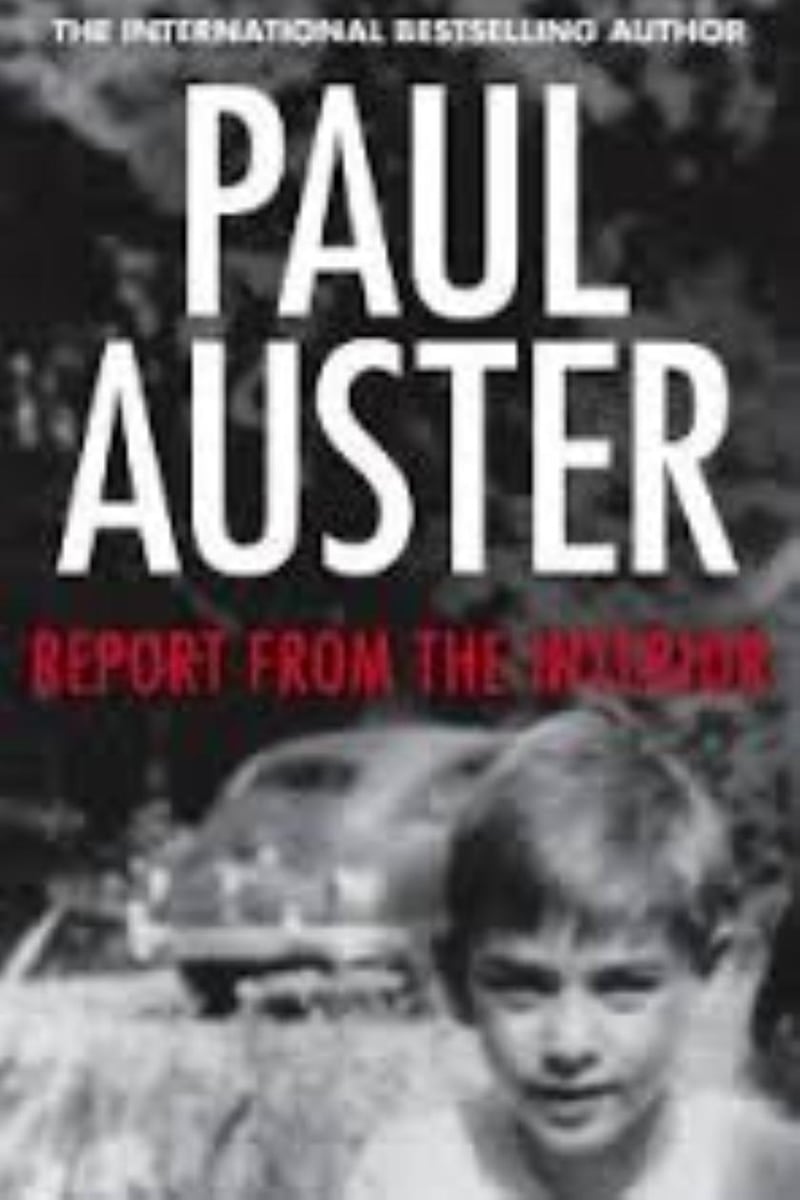Mention Paul Auster and many readers will instinctively think of the novels that have made his name. Fiction came later to the Brooklyn-based writer, but his first published work was part-memoir, part nonfiction. In 1982, in The Invention of Solitude , he wrote: "The pen will never be able to move fast enough to write down every word discovered in the space of memory. Some things have been lost forever, other things will perhaps be remembered again."
Three decades and several novels, film scripts and essay collections later, Auster is still interested in locating memory and its biases. In mid 2012 he published a slim memoir, Winter Journal , now swiftly followed by another autobiographical book. But there is a distinction, in Auster's mind anyway, between the works.
In Winter Journal he proclaimed that he wanted to write about the body and "catalogue the manifold knocks and pleasures experienced by your physical self". Report from the Interior is its opposite: an inner narrative of recollection. One book details the outer corporeal life, the other the cerebral, yet Auster's decision to separate these intrinsically linked parts of his being is curious. How, as Yeats once asked, do we know the dancer from the dance?

Divided into four sections, the book mostly adheres to the conventions of memoir in being linear and confessional, and in beginning with the biographical nuts and bolts of childhood. Here Auster is at his most honest and engaging, revealing his nascent fears: polio, his sister’s declining mental health, and the threat of the cold war.
He is an anxious child, worried about “the starving children of India” and his parents’ uninvolved relationship. In marriage they are “cellmates thrown together” who later divorce, while his sister succumbs to a breakdown in her 20s.
The sense of being an outsider is tenuously linked to his Jewishness: “There were no cowboys called Bernstein or Schwartz, no private eyes called Greenberg or Cohen, and no presidential candidates whose parents had emigrated from the shtetls of eastern Poland and Russia.”
Auster finds solace in reading and sport. Although his interests sustain him, they also disappoint him. When he briefly meets the New York Yankees pitcher Whitey Ford it’s not the encounter he expected, and he is gripped by an inexplicable feeling of disappointment.
By his own admission his childhood “consists of no horror stories . . . but there is a constant, underlying feeling of sadness”. Auster makes a pragmatic assessment: that his parents’ loveless marriage drove him inwards to become a writer, “a man who has spent the better part of his life sitting alone in a room”.
Childhood-as-explanation is standard memoir fare, but in his quest for self-identity Auster explores his initiation into, and love for, the world of film. "Two Blows to the Head" are The Incredible Shrinking Man and I Am a Fugitive from a Chain Gang , which affect him profoundly.
Auster has written screenplays, notably the 1995 film Smoke , starring Harvey Keitel, and film is a recurring theme in his fiction. But this section reads like an analytical film-school text, and the personal becomes peripheral. Perhaps this is deliberate: after delving painfully into his family's life, Auster may have decided to sideline himself as a subject by exploring cinema.
This subject matter allows him to retreat temporarily, but his decision to narrate the book in the second person, as he did in Winter Journal , puts him at a constant remove. This book was undertaken, he explains, "not because you find yourself a rare or exceptional object of study, but precisely because you don't, because you think of yourself as anyone, everyone".
In Winter Journal the "you" voice feels compatible with the subject: Auster's musing on the body's "sensory data" and the world outside of himself. This book shifts to the interior and calls for an opposite voice – a fully habited "I" – but, instead, it continues in a distancing second person.
Perhaps the most jarring inclusion in the book is the college letters to his first wife, the writer Lydia Davis. These are, he admits, his first attempt at serious writing, but it's difficult to see what they reveal by being included here.
The more Report from the Interior draws to a close, the more it feels like a grab bag of ephemera or an afterthought scrapbook. This is particularly evident in the final section, "Album", consisting of more than 100 images connected to the stories that precede them. From Felix the Cat to film stills, Nazi rallies and Coney Island shop fronts, they are intriguing, but why not use these pages to tell us more?
All memoir relies on recalled fragments and the distillation of ordinary moments. Auster is a gifted storyteller, but surprisingly, on the page, his own narrative feels more like a remote miscellany.












